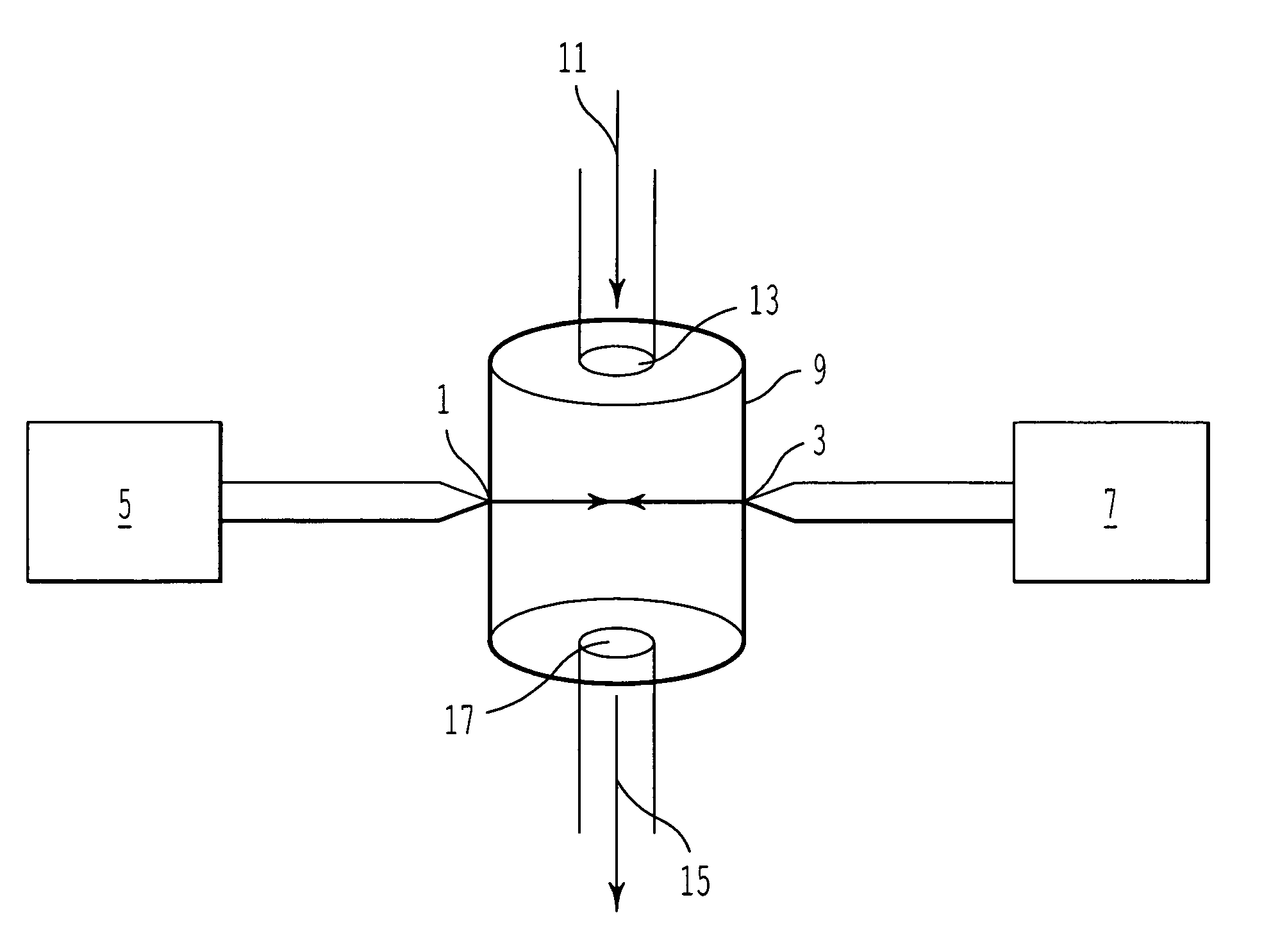Process for producing dispersions
a technology of dispersions and dispersions, which is applied in the direction of gas current separation, centrifuges, grain treatment, etc., can solve the problems of limiting the use of dispersions thus produced, affecting the efficiency of dispersions, etc., to achieve the effect of simple and economic isolation of dispersions
- Summary
- Abstract
- Description
- Claims
- Application Information
AI Technical Summary
Benefits of technology
Problems solved by technology
Method used
Image
Examples
examples
Analytical Method
[0036]The average secondary particle size was determined using a Zetasizer 3000 Hsa from Malvern.
[0037]The viscosity of the dispersions produced was determined using a rotary rheometer from Physica, Model MCR 300, and a measuring cup CC 27. The viscosity value was determined at a shear rate of 500 1 / sec. This shear rate is within a range in which the viscosity is virtually independent of the shear stress.
[0038]Production of the Dispersions
[0039]Preliminary dispersion: 36 kg deionized water was placed in a 60 1 high-grade steel batch tank. 16.5 kg aluminum oxide type C (DEGUSSA AG) was sucked up and coarsely predispersed with the aid of a dispersing and suction mixer from Ystrahl (at 4500 rpm). During the suction procedure, a pH value of 4.5 was established and maintained by addition of 50% acetic acid. After the introduction of the powder, the dispersion process was completed using a rotor / stator continuous homogenizer type Z 66 from Ystral, having four working whee...
PUM
| Property | Measurement | Unit |
|---|---|---|
| Temperature | aaaaa | aaaaa |
| Length | aaaaa | aaaaa |
| Pressure | aaaaa | aaaaa |
Abstract
Description
Claims
Application Information
 Login to View More
Login to View More - R&D
- Intellectual Property
- Life Sciences
- Materials
- Tech Scout
- Unparalleled Data Quality
- Higher Quality Content
- 60% Fewer Hallucinations
Browse by: Latest US Patents, China's latest patents, Technical Efficacy Thesaurus, Application Domain, Technology Topic, Popular Technical Reports.
© 2025 PatSnap. All rights reserved.Legal|Privacy policy|Modern Slavery Act Transparency Statement|Sitemap|About US| Contact US: help@patsnap.com


